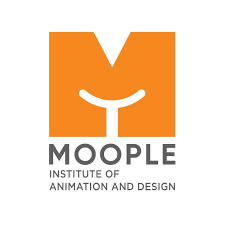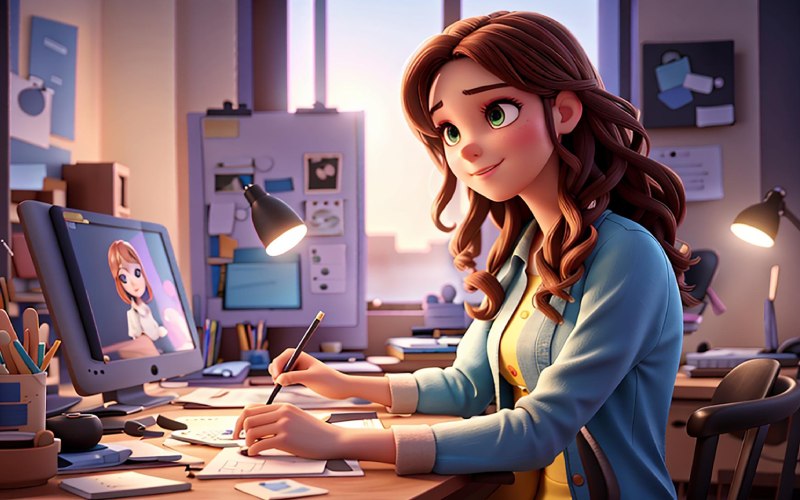In today’s visually-driven world, the demand for innovative graphics designer course is growing quickly. In addition, a creative head is someone who leads and oversees creative crews and plans, generally in advertising, design, or media companies. However, design and creativity, becoming a creative head can be an exciting and satisfying career option, if you have a passion for art.
What Does a Creative Head Do?
A creative head, also known as a creative director, is the leader of the creative department in an association. In fact, their core responsibility is to oversee the conceptualization and accomplishment of creative ideas, juggernauts, and design plans.
Some typical duties and liabilities of a creative head include
- First, lead and mentor a team of designers, copywriters, and other creatives
- Second, brainstorming and developing creative notions and strategies
- Third, guiding the overall visual identity and style of juggernauts and projects
- Also, ensuring work meets customer demands and brand guidelines
- Fifth, overseeing art direction, layouts, diagrams, images, and other visual elements
- After that, directing photoshoots and video production
- Seventh, presenting ideas and final deliverables to customers
- Finally, keeping up with trends in design, advertising, and creativity
The creative head works closely with account managers, strategists, and clients to produce innovative and effective creative work. Strong leadership, communication, and presentation skills are additionally needed.
Important Skills for a Creative Head
To succeed as a creative head, some important skills and qualifications include:
- In-depth knowledge of design, including principles of color, layout, typography, composition, etc.
- Strong creative thinking and also problem-solving skills
- Ability to think conceptually and visually
- Excellent communication and presentation skills
- Strong leadership and in fact, team management abilities
- Understanding of marketing and advertising strategies
- Knowledge of production and also printing techniques
- Attention to detail and organizational skills
- In fact, holding a degree in specific fields like Fine Arts or Design is also necessary
Educational Background Required
While some creative heads work their way up without formal education, having a relevant degree gives you a solid foundation in design principles and techniques. Here are some good options:
Bachelor’s Degree
Some popular choices include:
- B.A. in Graphics Designer Course or Communication Design
- BFA in Graphic Design, Advertising Art Direction or Illustration
Classes will cover topics like design theory, drawing, art history, typography, layout, branding, software programs, user experience design, marketing, and more. Students also build a portfolio through course projects.
Master’s Degree
For higher-level roles, a Master’s degree may be required. Options include:
- MA/MFA in Design, Visual Communication, or Branding Strategy
- MBA in Marketing or Advertising
A graduate graphics designer course also allows for more advanced studies and specialization. Additionally, you can get hands-on experience through internships and build your portfolio.
Graphic Design and Animation Courses
Within a design degree, these courses in fact, teach skills directly relevant to a creative head role:
Graphic Design Courses
- Digital Imaging
- Typography
- Information Design
- Publication and Editorial Design
- Branding and Identity Design
- Advertising Design
- Packaging Design
- Web Design
- Motion Graphics
Animation Courses
- B.sc in Animation
- 2D Animation
- 3D Modeling and Animation
- Stop Motion Animation
- Animating for Video Games
- Visual Effects and Compositing
- Character Design and Rigging
- Storyboarding
- Experimental Animation
In addition, learning both graphic design and animation courses allow you to oversee a wider range of projects in your career.
Key Software Skills
Proficiency in design software is a must for creative heads. Essential programs to learn include:
- Adobe Creative Suite (Photoshop, Illustrator, InDesign)
- Adobe Premiere Pro, Final Cut Pro and After Effects for video
- Sketch, Figma, and InVision for UX/UI design
- Various 3D animation software such as Maya, Cinema 4D or Blender
In fact, many of these programs are taught in design degrees. Online tutorials, short graphic designer courses, and certifications can also help you master the software.
Gaining Work Experience
Additionally, education, real-world experience is invaluable when starting as a creative head. Some key ways to build your portfolio and skills include:
- Internships: Complete internships every summer in agencies or companies like Moople Academy with creative crews. You will gain hands-on design practice.
- Internships: Complete internships every summer in agencies or companies like Moople Academy with creative crews. You will gain hands-on design practice.
- Freelancing: Take on freelance graphic design, social media, or content strategies to add diversity to your portfolio.
- Design Contests: Enter your work into contests like D&AD or The One Show to get exposure and win awards.
- Pro Bono Work: Volunteer your expertise for nonprofit associations who need creative work but may have limited budgets.
- Certificate Programs: Take short-term certificates in design specialties like UX, video editing, or 3D modeling to expand your toolkit.
- Junior Designer tasks: In addition, start as a junior designer at a company and little by little take on further responsibility to work your way over.
Gaining experience in creative places and also making a strong portfolio will help you transition into an eventual creative head position.
Career Path and Progression
Here is a typical career path that can lead to a creative head position
- Graphic Designer
- Senior Graphic Designer
- Art Director
- Associate Creative Director
- Creative Director( Creative Head)
It generally takes 5- 7 years of working in junior to mid-level creative positions before you progress to overseeing full creative crews.
To advance, be proactive about taking on further responsibility in each task. Furthermore, lead crucial projects, tutor junior staff, expand your skills, and make connections with clients. With proven leadership experience and a strong book of work, you can finally aim for that Creative Director title. However, the career progression may look different in lower mid-sized companies. But the focus should be on steadily constructing your experience.
In summary, becoming a creative head requires natural talent, technical expertise, education, and work experience. Start by choosing the right design or advertising degree and portfolio-building chances. Be proactive about taking on further responsibility in each role. Stay steadfast in honing your craft. With clear career progression, creativity, leadership capability, and patience, you can attain that coveted Creative Director title and lead talented teams to bring amazing ideas to life. In addition, you can become a visionary Creative Head and bring ideas to life with Moople Academy’s comprehensive graphic design and animation courses.

